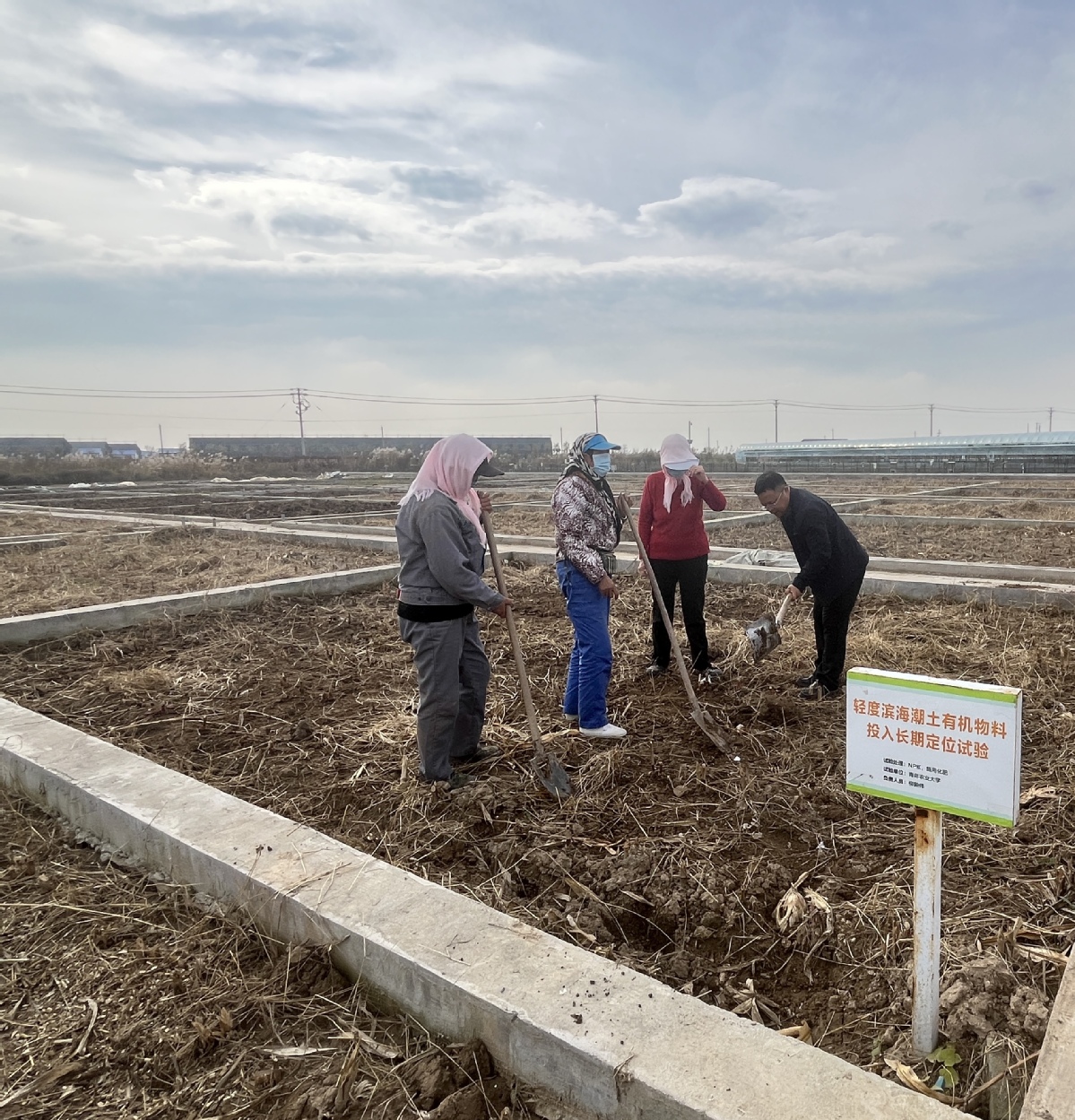Innovation raises golden fields from former barren salt flats
District in Shandong transformed by agricultural advances, new seed varieties


Seeders moved up and down the fields placing wheat seeds in the soil in an agricultural district of Dongying, Shandong province, in early November. It's hard to imagine that just over a decade ago this vast expanse in Huanghekou town of Kenli district, was a stark, white expanse of saline-alkaline land.
"Back in 2010, nothing would grow, just sparse cotton with pitifully low yields. The land was considered worthless. Fellow farmers leased it to me for 50 yuan ($7) per mu (0.067 hectare)," said Li Dianquan, a local farmer, as he busily refilled the seeder.
Nestled on the shores of the Bohai Sea where the meandering Yellow River empties into the ocean, Dongying's landscape has been shaped by an unusual geographical legacy.
The gradual retreat of seawater over time left behind salt deposits that have so far created 227,330 hectares of saline-alkaline land. This area accounts for 38 percent of the total saline-alkaline land in the province.
"In the autumn harvest season, Shandong's landscape resembles a colorful palette, but the last color we want to see is the white of saline-alkaline land," said Wang Jingdong, deputy director of the Shandong Provincial Department of Agriculture and Rural Affairs.
The fourth plenary session of the 20th Central Committee of the Communist Party of China in October called for enhancing overall agricultural production performance, quality and efficiency. Saline-alkaline land utilization is a crucial part of this effort, holding significant strategic importance for safeguarding national food security and ensuring China's food supply remains firmly in its own hands.
Shandong has integrated the comprehensive utilization of saline-alkaline land into the national strategy for developing the Yellow River Basin. The province is exploring a path characterized by ecological prioritization, adaptation to local conditions, compatibility between seeds and land, and technological support.
"The once white, barren land is now transforming into golden, high-yield fields," said Wang.
Harvesting hope
Li's farmland lies directly across the road from Huanghekou, or the Yellow River Estuary.
He started acquiring land from his fellow villagers in 2010 to carry out large-scale land management.
"At the beginning, I secured around 10 hectares of land. They leased the land to me at very low prices because the land had very low yields," he said.
He rehabilitated the land using methods such as irrigation and deep plowing. "It's very difficult to increase grain yield during the first three to five years, but later with the local government's support and also after accumulating some experience, the grain yield increased," he said.
























